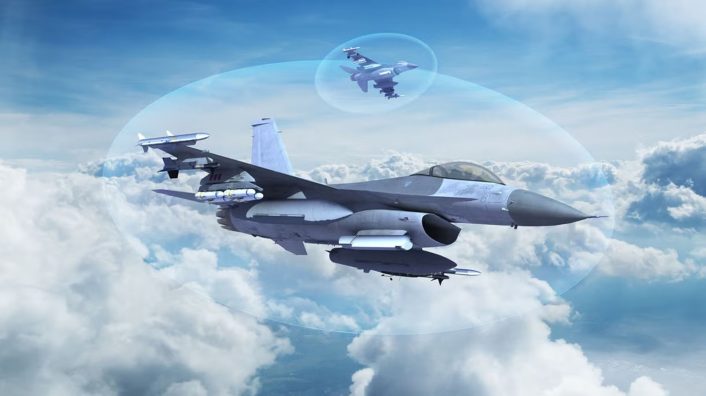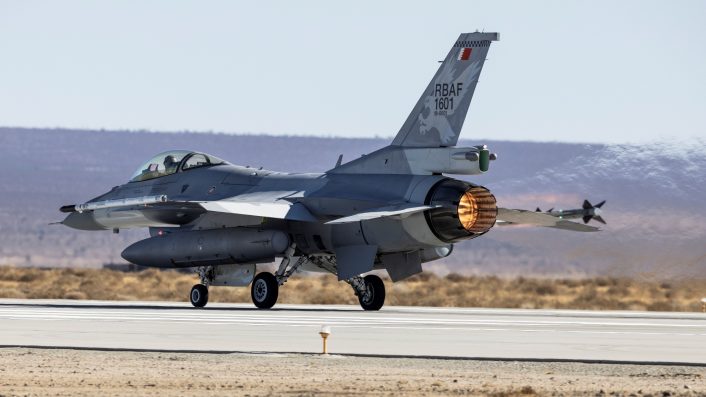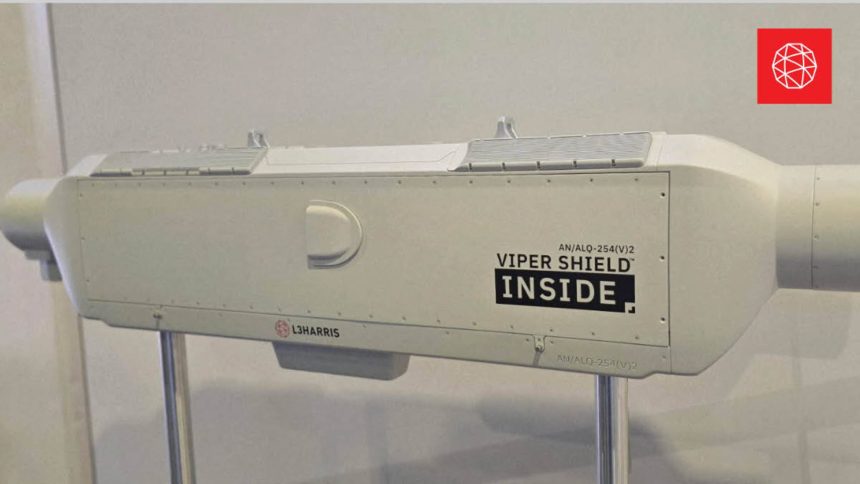The Viper Shield pod shares commonality with the internally mounted variant and would offer the same level of protection from evolving threats.
U.S. company L3Harris revealed on Sep. 25, 2025 the podded version of its AN/ALQ-254(V)1 Viper Shield electronic warfare suite for the F-16 fleet, offering an option for operators of the jet as an alternative to the internally mounted variant. This comes nearly one month after Poland selected the Viper Shield for its F-16s as part of the Mid-Life Upgrade.
The internally mounted Viper Shield consists of six line-replaceable units (LRUs) and a cockpit display, based on an all-digital architecture which uses commercial-off-the-shelf (COTS) technology for enhanced system performance, a smaller form factor, reduced weight and easier future upgrades. Developed in partnership with Lockheed Martin, the suite provides U.S. allies with “cutting-edge countermeasures against sophisticated, ever-changing threats,” says L3Harris.
Regarding the podded variant, L3Harris said it would be suitable for nations “looking to upgrade their F-16 fleets with advanced L3Harris Viper Shield electronic warfare (EW) protection […] that offers the same level of protection as an internally integrated system.”
Meet the Pod variant of our Viper Shield electronic warfare system. 👇
Offering the same level of protection as an internally integrated system, the external Pod offers flexibility for nations augmenting EW capabilities in F-16 fleets. Learn more: https://t.co/MVdwj5XVGM… pic.twitter.com/Io0CgvXviJ
— L3Harris (@L3HarrisTech) September 24, 2025
L3Harris’ President for Space and Airborne Systems Ed Zoiss referred to the internal version when he named Poland among the seven U.S. partner nations that chose the system for its “advanced EW capabilities and ease of upgrade.” In the company’s press release, he explained “Future customers – especially those who operate the F-16 Block 50 or earlier – may prefer the flexibility of the Viper Shield external Pod to increase aircraft survivability.”
Podded Viper Shield
The image of the pod released by the company shows design and appearance much similar to Northrop Grumman’s AN/ALQ-131(V) ECM (Electronic Countermeasure) pod that is already used by the F-16, but also other platforms such as the A-10, F-15, F-4 and F-111.
L3Harris’ internal variant of the Viper Shield first flew on an F-16C Block 70 of the Royal Bahraini Air Force in February 2025 at Edwards AFB, California, conducted by a pilot of the 416th Flight Test Squadron, Airpower Foundations Combined Test Force. The company is already on contract to provide Viper Shield to seven international partners, following Poland’s announcement, for installation on 168 F-16s.

Among the F-16 Block 70s that will receive the system, according to FMS notifications, are Bahrain, Bulgaria, Morocco, Slovakia, Taiwan and possibly the Philippines. Greece and Jordan are also acquiring Block 70s, but have not disclosed which EW suite they will use.
Viper Shield’s affordability is brought about by an active production line and development funding by current partner nations, says L3Harris, beside its internal investments. The new pod requires a simple integration process, allowing ground crews of F-16 operators “to swap an entire system from one aircraft to another to meet mission requirements,” L3Harris added.
Both the podded and the internal system share an open-system design, commercial off-the-shelf technology and software-defined architecture. This allows easy future upgrades in both hardware and software, along with compatibility with newer “high-tech radar and electronic systems” to “further enhance situational awareness, threat detection and countermeasure capabilities.”

The lighter, smaller and more modular podded Viper Shield “fits on all F-16 blocks, from legacy to new,” says L3Harris. “Its line replaceable units (LRUs) can be easily removed and replaced in the field, with room to add advanced capabilities via 3U Versatile Performance Extension upgrades in the future,” the company says.
Additionally, the internal and the podded system have identical internal components down to the same part numbers, explains L3Harris, allowing ground “to swap an entire system from one aircraft to another to meet mission requirements.”









